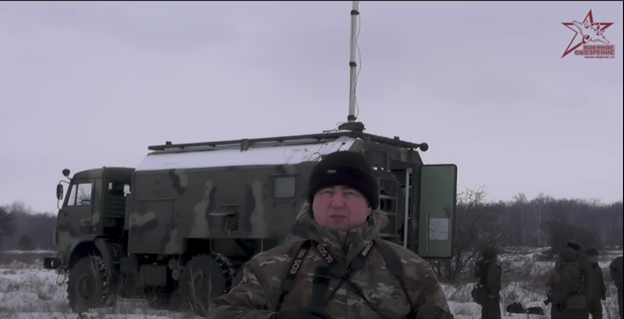Reports
Russian Military UAV Used in Ukraine Depends on Foreign Parts
by Spencer Faragasso
May 11, 2022
Russia is well known to depend on foreign goods for its military equipment and industries. Recent Ukrainian social media reports illustrate the large fraction of foreign goods in Russia’s Orlan-10, a mid-range, gasoline-engine, propellor-driven reconnaissance unmanned aerial vehicle (UAV) widely used by Russian military forces to pinpoint Ukrainian civilian and military targets for artillery strikes.
Official Russian sources claim that the Orlan-10 is a “Russian made” UAV, first developed in 2010 by the Russian state-owned firm Special Technology Center (STC) and since used in military action in Syria and Ukraine. Since the beginning of Russia’s invasion of Ukraine, however, several Ukrainian social media reports offer a far different narrative. Information on the internal components in recovered or damaged Orlan-10 UAV aircraft are analyzed here, identifying several Western brand components and parts. This information indicates that Russia is highly dependent on sourcing foreign commodities to produce this weapon system vital to Russia’s devastating artillery barrages against military and civilian targets.
The impact of Western sanctions will make sourcing these commodities increasingly difficult for Russia. As a result, the stock of operable vehicles and spare parts would be expected to slowly diminish and force Russia to rely more on Russian-made goods or from other sources.
Figure 1. A screenshot from a demonstration video of an Orlan-10 UAV on its launch catapult.
The Orlan-10 is a relatively low-tech, propellor-driven UAV, launched from a catapult and landing by parachute. Its modular design enables its ground assembly just prior to launch by its operating crew. The UAV is flown remotely from a controller, typically from a command-and-control vehicle. Its range of 150 kilometers provides Russian combat forces in Ukraine with reconnaissance information, enabling these forces to fire its artillery more accurately at Ukrainian positions. This UAV can also provide laser guidance for guided munitions. Another variant of this UAV is also suspected to be deployed with signal jamming capabilities.
Parts List
Open-source information, including videos of captured or downed Orlan-10 UAV, reveals foreign commodities as the key components in the Orlan-10. A list of the known parts produced by companies outside of Russia is in the table below. These components are available on the open market and are relatively inexpensive compared to the complex and advanced systems that typically make up modern combat systems.
Many of the identified components originate from companies based in the United States. Some of the companies are based in Europe, while a smaller number of companies are based in China and Japan. The manufacturers of other parts of the UAV, such as the propellor, wings, tail, and other components could not be identified from the online postings.
The procurement pathways or networks acquiring these components could not be identified from the available information. Surprisingly, Russia appears to have decided not to source its domestic industries, perhaps because these industries do not exist or cannot produce reliable parts, such as the Japanese camera lens or U.S. microchips.
The claim that the UAV costs close to $100,000 to produce is at odds with the parts list in the table. Based on this figure alone, it would be assumed that the components are specially sourced or specifically designed for the activities that the UAV would undertake. For example, the on-board imaging and targeting camera is what appears to be an off-the-shelf Canon EOS 750D digital camera that’s has a value of $750. In a video demonstration of the UAV published on YouTube in 2018, a Russian soldier can even be seen wearing a Canon branded camera strap (see Figure 2). The true value of the UAV cannot be determined, but based on the available information, it is many thousands, if not tens of thousands less than what is claimed.
Figure 2. A Russian soldier wearing Canon brand EOS 70D camera strap. This image is taken from a demonstration video of the Orlan-10, published on the website YouTube.




 twitter
twitter